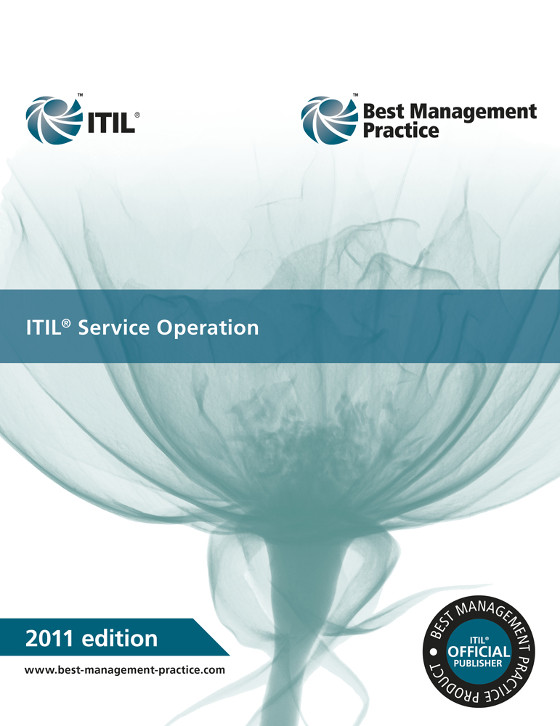
A multi-user licence to one of the core five ITIL® publications, providing authoritative and comprehensive guidance for ITSM professionals and those studying for the ITIL® Service Operation exam.
ITIL® provides guidance on the provision of quality IT services, and on the processes needed to support them. The aim of the service operation stage of the ITIL® service lifecycle is to coordinate and carry out the processes required to deliver and manage services to business users and customers, and to manage the technology used to deliver and support services.
If you are looking to provide access to some or all of the core ITIL® books to a large ITSM team, multi-user access is often a very cost-effective way of each member of staff accessing the content.
If you are buying all five ITIL® core titles you’ll save over £800 by buying an ITIL® Lifecycle Publication Suite Multi-user Licence.
ITIL® 2011 Service Operation describes best practice for managing services in supported environments, and provides guidance which includes:
Other topics covered include event management, request fulfilment, problem management and access management processes, service desk functions, technical management functions, IT operations management functions, and application management functions.
The concepts in ITIL® 2011 have been updated for clarity and consistency, without affecting the overall message, ensuring every stage of the service lifecycle remains focused on the business case, and relates to all the companion process elements that follow. ITIL® 2011 is fully aligned with MSP®, M_o_R®, PRINCE2® and P3O®.
It is recommended that ITIL® 2011 Service Operation is used in conjunction with the other core ITIL® publications.
Click to expand full contents »
List of figures
List of tables
Foreword
Preface
Acknowledgements
1. Introduction
2. Service management as a practice
3. Service operation principles
4. Service operation processes
5. Common service operation activities
6. Organizing for service operation
7. Technology considerations
8. Implementation of service operation
9. Challenges, risks and critical success factors
Afterword
Appendix A: Related Guidance
Appendix B: Communication in service operation
Appendix C: Kepner and Tregoe
Appendix D: Ishikawa diagrams
Appendix E: Considerations for facilities management
Appendix F: Physical access control
Appendix G: Risk assessment and management
Appendix H: Pareto analysis
Appendix I: Examples of inputs and outputs across the service cycle
References and further reading
Abbreviations and glossary
Index
A concurrent multi-user licence enables a number of people to access the full range of ITIL® material simultaneously in its full online format. Multi-user access to the material is by IP authentication, password and username, or referral link, which means that any person using these methods will be able to access the material, up to the maximum number of simultaneous users permitted by your licence. As all users of ITIL® material within an organisation do not necessarily need to access it simultaneously, a multi-user licence can be a very cost-effective option. A licence covering one concurrent user, for example, may support between 10 and 15 users inside your organisation, depending on the frequency and timing of each user’s access of the material.
You can purchase a multi-user licence by selecting the appropriate amount of users to be covered by the licence in the in the drop-down box above.
We can, and often do, supply multi-user licences for larger organisations which may need hundreds of staff to access the material. Please contact us for a price and any specific information you may need in considering this purchase.